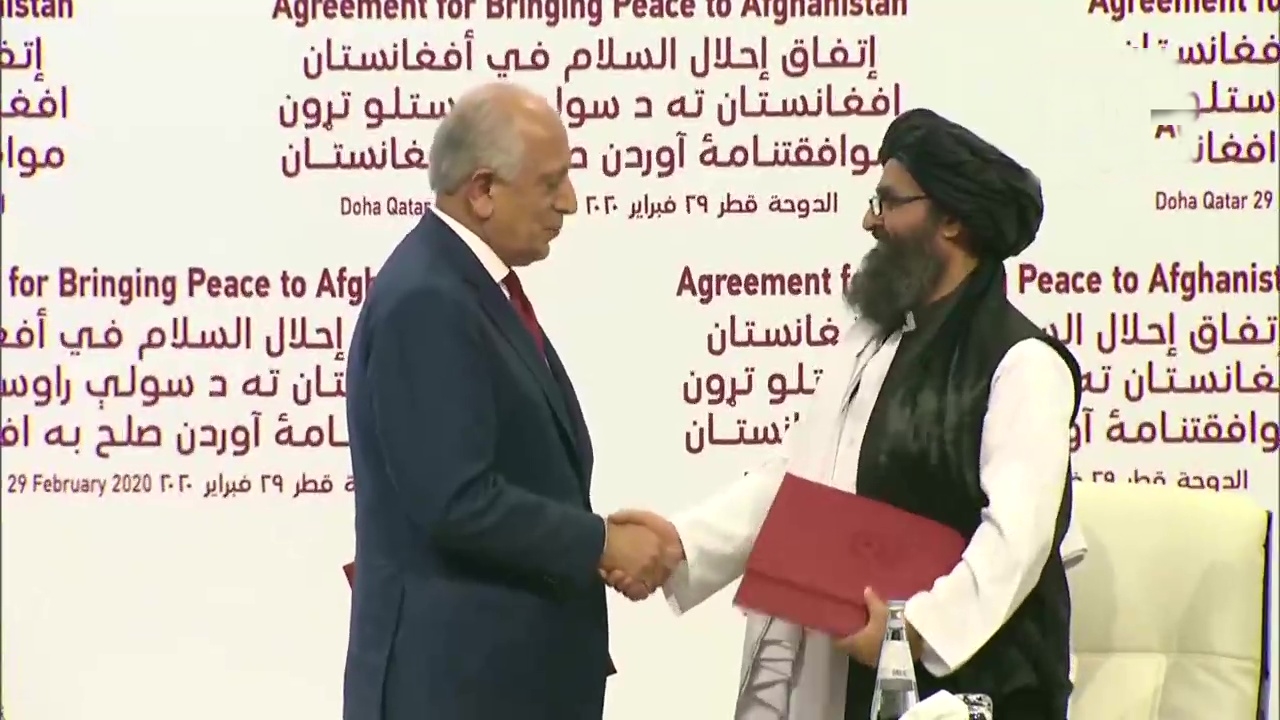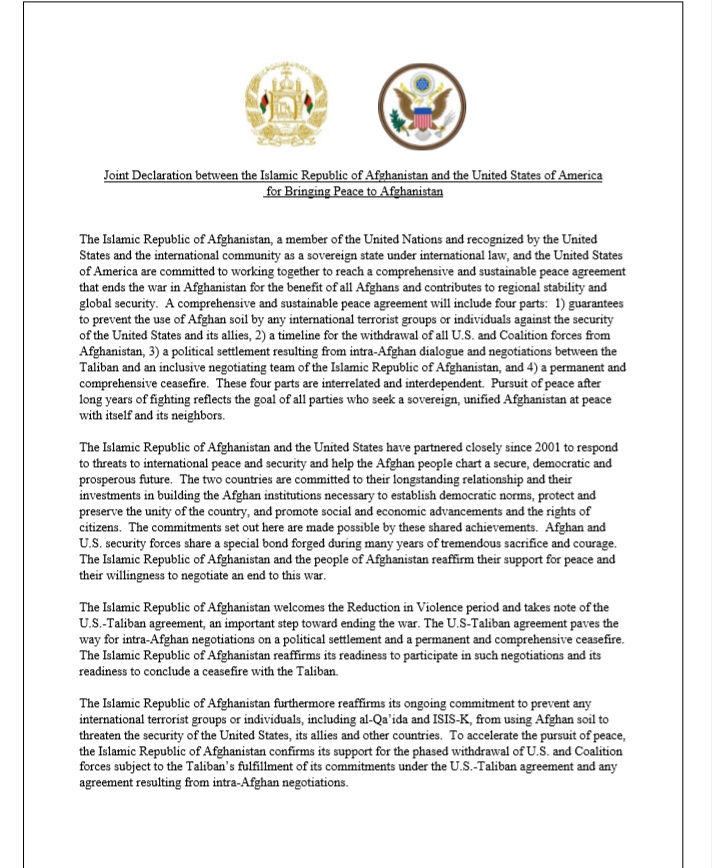New Delhi: When President Donald Trump had good words for Pakistan (“we have good relations with Pakistan” and “PM Khan is my friend”) during his New Delhi visit on Tuesday, he possibly had Afghanistan and the upcoming Doha talks in mind. For on Saturday, the US may ink a key deal with the Taliban at the Sheraton Grand Doha hotel in Qatar.
For Pakistan, a well-known sponsor of the forces of terror, it must have been sweet music, must to the discomfiture of India. But without doubt, Afghanistan is staring at a much worse state than before and a future more deadly. Its consequences on India could be as dangerous and the implications as terrible.
For the Taliban, a Doha pact will help them achieve their aim without firing a single shot—making Americans leave Afghanistan.

While for the US, it offers an honourable exit although a small force of about 8,000 US troops will stay on. The unending 19-year-long ‘war against terror’ has cost the US $700 billion till now, the deaths of about 2,500 US soldiers while more than 20,000 have been injured, not to speak of the more than 100,000 civilian casualties in the last ten years.
Body-bags going home to the US and burgeoning expenses aside, the inconclusive nature of the war in faraway Afghanistan had made it very unpopular. The domestic opposition has made it imperative for President Donald Trump to seek an honourable exit.
With a lot of bravado, the US forces marched into Afghanistan in the autumn of 2001 in relentless pursuit of the perpetrators of 9/11. Nineteen years later, the Americans are in a persistent quest to end it all at the ongoing US-Taliban talks.

Behind the scenes at Doha, besides Qatar, it was Pakistan that had played a key role in prodding the Taliban—its old friend—to come to the negotiating table.
But the wind direction is clearly favouring the Taliban now. With the weakening of government authority, the Taliban has grown stronger and controls about 70 per cent of the country now, a very rapid progression from 2014 when it captured Kunduz, the first city to fall to the Taliban.
The question, therefore, is not whether the Taliban comes to power in Kabul, but when.
With the Taliban at odds with the democratically-elected President Ashraf Ghani-led government in Kabul, there is much that India stands to lose.
Because once that happens, there is a much greater possibility of forces inimical to India at the helm of affairs. But India should have seen it coming. The Afghanistan narrative was fast-changing.
A few years ago, it would have been unthinkable. On February 20, 2020, the New York Times carried a bomb of a surprise. It had an op-ed written purportedly by Sirajuddin Haqqani, the infamous leader of the ISI-sponsored Haqqani Network of terror, now strongly aligned with the Taliban and the Al Qaida.
That is just the indication of how equations have changed in war-ravaged Afghanistan.
All throughout these years, India had stood solidly behind the Afghan nationalist government at Kabul. It had given modern weaponry including combat helicopters, trained its military, and taken a keen part in the numerous socio-economic efforts to rebuild the war and insurgency-devastated country. All short of deploying ‘boots-on-the-ground’ notwithstanding US pressure to station Indian soldiers in Afghanistan.
As a result, a 100,000-strong professional and modern Afghanistan army stand raised now. On the other hand, the Taliban is reported to have a combined force of about 70,000 fighters. Raised on an anti-Taliban ideology, the government forces will not willingly and easily cede space to the Taliban.
But there are valid questions as to how these two entities could forget the bitter rancor of the past and integrate themselves smoothly to work together.
To add to the complexity is the strong presence of ISIS which is in loggerheads with the Taliban-Al Qaida-Haqqani Network combine. The biggest danger now is that many fighters in the Taliban fold are not happy with the ongoing talks with the Americans and may be expected to join the ISIS (ISIS Khorasan to be more specific).
In other words, Afghanistan may be looking at civil war in the offing. A civil war will lead to a state of instability, where it will be easier than ever for Pakistan to emerge as a power to reckon with as also to enhance its bargaining power with the US.
From the Indian point of view, among the 20 odd Islamist outfits operating in Afghanistan is Al-Qaeda in the Indian Subcontinent (AQIS) that was set up in 2014. The AQIS mandate lies across Afghanistan, India, Pakistan, Bangladesh, and Myanmar.
Afghanistan will become a playing ground not just for foreign powers like the US, Pakistan, Russia, Iran, but also for Islamist fighters with a focused anti-India agenda.



